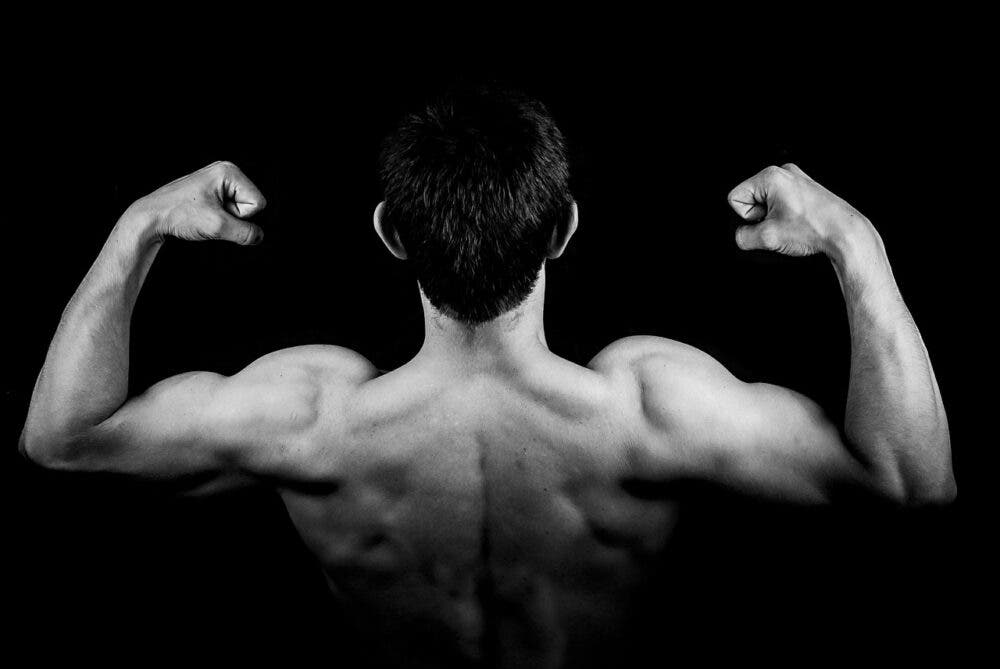If you have reached this article it is because you are probably wondering what muscle pumping is . Well, the first thing you should know is that, believe it or not, you may have experienced its effects if you regularly go to the gym, even without being aware of it.
This is because it is a very common training approach , present in most training routines, but which is often not given importance, so it tends to go unnoticed.
If you are interested in knowing what muscle pumping is and under what circumstances it occurs , read on.
What is muscle pumping?
The first thing to know about what muscle pumping is is that, aesthetically, it is an increase in the size of the muscles. However, the change is not limited to larger muscles and marked veins, but this effect also makes people feel more vigorous and strong when it occurs.
From a scientific approach, muscle pumping arises because the blood pumped through the muscles is increased. This means that the levels of nutrients and oxygen increase , which generates the aforementioned sensations.
It is not a purposeless reaction of the body. The goal of muscle pumping is to increase muscle strength and endurance at times when you sense this as a prevailing need.

Benefits in muscle mass
Muscle pumping is not limited to making you feel stronger and improving your appearance. Some studies have suggested that this effect could also have important benefits for the growth of muscle mass .
Specifically, it has been noted that muscle pumping is capable of stimulating long-term adaptations in the muscles where it occurs. That is, it gives an extra boost to the muscles for the creation of muscle mass in the future.
Muscle pump training methods
Now that you know what muscle pumping is and the benefits it brings when training a specific muscle group, you are probably interested in knowing how to take advantage of this phenomenon to improve the effectiveness of your hypertrophy workouts .
In this regard, it must be said that training methods aimed at benefiting from muscle pumping focus on maximizing vascular occlusion . When this occurs, the pumping becomes more intense, which in the long term produces an improvement in muscle mass gain.
To achieve maximization of vascular occlusion, continuous lifting exercises with little rest time are recommended, which should have a minimum of five sets .

Low intensity knee extensions, without a rest period, have been shown to produce greater vascular occlusion , compared to high intensity knee extensions with one second rest (Tanimoto and Ishii, 2006).
Therefore, intensity levels should be low enough to allow a minimum of five sets to be performed correctly , without excessively long rest periods.
Psychological aspect
A very important aspect to take into account to achieve muscle pumping is the psychological. Even when all the scientific recommendations are taken into consideration to get the maximum benefit from this natural body process, it may not be enough.
In most cases this is due to concentration failures . This drawback is more common when the person is so used to his routine that he ends up doing the training by inertia, without paying enough attention to muscle movement.
When this occurs, people tend to apply insufficient effort level to exercise, thereby omitting an essential component of muscle pump training.
Therefore, it is important to focus your thoughts on the "here and now" during each workout: only then is it possible to achieve a full and effective pump .
To achieve this, it is recommended to analyze what are the circumstances that affect you each time you train. There may be certain times of the day when you feel most energetic, so the key to maximizing effort can be found in training at the right time .
At other times, concentration problems may be due to the environment . It is important to attend a gym in which you can feel comfortable.
References
- Ahtiainen, JP, Pakarinen, A., Kraemer, WJ, & Häkkinen, K. (2003). Acute hormonal and neuromuscular responses and recovery to forced vs. maximum repetitions multiple resistance exercises. International journal of sports medicine , 24 (06), 410-418.
- Schoenfeld, BJ, & Contreras, B. (2014). The muscle pump: potential mechanisms and applications for enhancing hypertrophic adaptations. Strength & Conditioning Journal , 36 (3), 21-25.
- Bravo, K. (2015, August 18). What is muscle pumping ? Tips Gym. https://www.consejosgym.com/que-es-el-bombeo-muscular/
- Tanimoto, M., & Ishii, N. (2006). Effects of low-intensity resistance exercise with slow movement and tonic force generation on muscular function in young men. Journal of Applied Physiology, 100 (4), 1150-1157.
